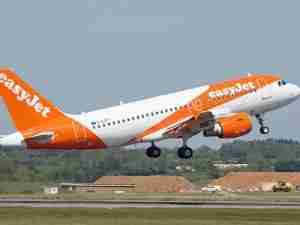Airbus Group SE announced plans to lift output of the aging A330 jet and predicted higher annual deliveries, indicating its confidence weeks after U.S. rival Boeing Co. shocked investors by flagging a drop in output.
The European planemaker said Wednesday it will restore A330 production to seven a month in 2017, suggesting it has come to terms with a demand dip that followed the announcement of a re-engined version due at the end of that year.
Airbus aims to hand over more than 650 jets in 2016, up from 635 in 2015, with output of the latest A350 wide-body more than tripling to 50 jets. Boeing, by contrast, said Jan. 27 that deliveries could drop by 22 from last year’s record tally of 762, sending the stock to its steepest drop since October 2001.
“We’re handling it so far,” Airbus Chief Executive Officer Tom Enders said in an interview of the ramp up, which includes the A320neo narrow-body that began deliveries last month. “On the A330, I think we were prudent to take an early decision to bring the rates down, but we have always said we’re flexible, and if we saw stronger demand, to go up again.”
Engine Glitch
Airbus, which gets two-thirds of revenue from its airliner unit, is embarking on one of the biggest output increases in its history after winning thousands of orders for fuel-efficient jets before the oil price fell. A320 production is set to reach 60 a month by mid-2019, aided by Airbus’s first U.S. assembly line, though deliveries of the Neo version will be “back-loaded” this year as engine supplier Pratt & Whitney grapples with an over-heating issue.
“The demand is there,” Enders said in an interview. “We still have over-bookings even when we talk about rate-60. On the A350, we had a relatively slow ramp-up in 2015, being prudent about the problems and teething issues you have on any new program, but in 2016 we have to double, triple production or more.”
At Boeing, CEO Dennis Muilenburg said last month that the decision to cut 2016 deliveries, which surprised investors after analysts had forecast an increase, reflected internal production shifts as it ramps up the new 737 Max rather than broader pressures on the sector.
The company plans to halve output of the 747 this year and assemble the first re-engined 737 Max jets at a slower pace. Production of the 787 Dreamliner is going in the other direction with an increase.
While Boeing will pare rates for the 777 by 16 percent next year, production of the 737 is expected to speed up as the first Max jets are delivered.
Profit Edges Up
Airbus’s earnings before interest and tax rose 1.6 percent to 4.13 billion euros ($4.6 billion) in 2015 as A350 deliveries reached 14 in the program’s first full year and the company broke even for the first time on the A380 superjumbo. Both cash flow and Ebit are forecast to be “stable” this year.
“That may not be terribly exciting, but the last thing we need is excitement at this critical juncture,” Sandy Morris, an aerospace analyst at Jefferies International in London, said in a note to investors.
Shares of Airbus traded 1.6 percent lower at 54.53 euros as of 5:04 p.m. in Paris, after earlier gaining 1.3 percent. The stock has declined 12 percent this year after surging 50 percent in 2015. Boeing has slipped almost 20 percent.
Fourth-quarter Ebit before one-offs at Airbus fell 10 percent to 1.33 billion euros, led by a 26 percent drop at the jetliner unit as it spent more on research, together with reduced contributions from Dassault Aviation SA, maker of the Rafale fighter, as Airbus sells down its stake. Twelve-month cash flow reached 2.8 billion euros in what Morris called a “thunderous” jump.
To contact the reporter on this story: Andrea Rothman in Toulouse at
[email protected]. To contact the editors responsible for this story: Chris Reiter at
[email protected], Brendan Case, Christopher Jasper
©2016 Bloomberg L.P.










